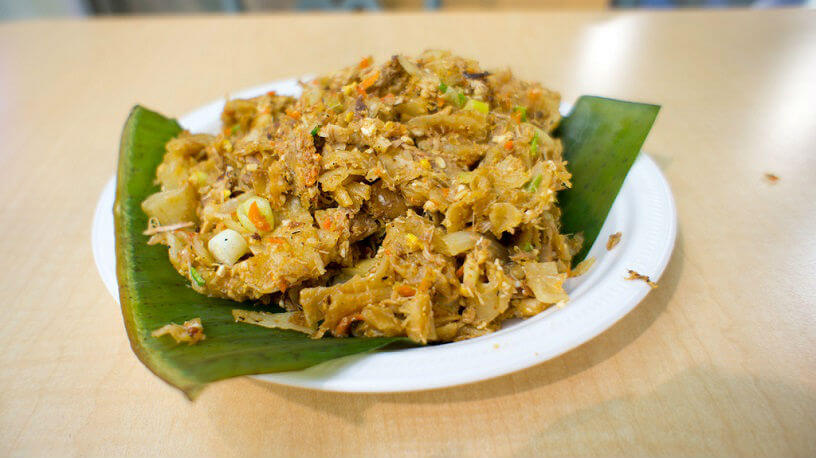6 Food Items You Must Try in Sri Lanka

Sri Lankan cuisine is a reflection of both its diverse landscape and its resourceful people. With a tropical environment of coconut-fringed wet zones, arid dry zones and cooler tea-coated highlands, almost anything can grow and live here. This means that vegetables, fruit, fish, meat and spices are all in abundance and come in a wide variation. Though, considering how many foreigners visit Sri Lanka it is surprising how few actually manage to sample the local food. The restaurants and cafes tend to cater to Western tastebuds, and the larger and more posh hotels stick with international fare. Since Sri Lanka does not traditionally have a dining-out culture, much of the best food is cooked in the home, and if you don’t mix with the locals, you are unlikely to uncover the culinary delights on offer here.
Rice and Curry
This is the main meal for most Sri Lankan families and it consists of rice that is served with a mix of fish, meat or poultry along with several different kinds of curries (generally made with lentils) and spices. There will usually be additional condiments that you can add to the dish depending on your personal taste. Chutneys, sambols and more are often the condiments offered and they tend to be spicy as they are made with ingredients like chilies, lime juice, onions, coconut and more. At meal time, all of the dishes will be placed on the dinner table so you can mix and match and enjoy.
Dhal Curry (Parippu)
Dhal curry is omnipresent in Sri Lanka and is one of the most commonly consumed staple dishes in Sri Lankan cuisine—many families eat it daily. The red lentils are cooked in a blend of spices and then served with all forms of rice and bread. The lentils are cooked with coconut milk and slowly made into a rich and thick stew that acts as a gravy for the rice served with it.
Milk Rice (Kiribath) with Onion Sambol
Milk rice is a traditional Sri Lankan dish that is made with rice and is often served during holidays and festivals such as Sinhalese New Year in April. Milk rice is made by cooking the rice in coconut milk and is then served with onion sambol. The sambol is an incredibly hot mix of red onions and spices. While many cultures save the spicy and hot meals for later in the day, milk rice is a traditional breakfast option in Sri Lanka.
Mallum – Gotukola Sambol
Mallum looks like green salad instead of a rice-based dish like other sambol dishes. The meal is prepared by mixing together shredded greens (three local green leaves) along with Maldive fish, chilies, onions, coconut and basic spices to garnish it. The name “Mallum” literally means to “mix up” so it makes sense as to why this dish is prepared the way it is. The best Mallum will be prepared fresh and because of this, the tastes and flavours add a surprising punch.
Kottu
You are bound to run into Kottu at some point during your stay in Sri Lanka as it is a very popular street food. Made up of shredded paratha bread, a traditional Sri Lanka bread, and stir-fried with spices and your choice of meat, it’s easy to see why it’s so popular. Kottu is sort of like the hamburger of Sri Lanka—it’s delicious and easy to eat on-the-go, making it nearly impossible to say no to. Since it is made with simple ingredients and strong spices, Kottu is a solid meal choice.
Sweetmeats – Kavum, Kokis, Asmi, etc.
There are a number of desserts that are prepared to help celebrate the New Year and other special occasions. The most popular kinds of sweetmeats are Kavum, Kokis, Asmi and Halape. Kavum is a battercake shaped like a mushroom that’s made of ground rice and treacle, then fried in oil; Kokis is a dish that is made of rice flour and coconut milk; Asmi is another traditional sweetmeat that’s dipped in treacle; and finally, Halape is a mix of jaggery and flour, which is then wrapped in a leaf and cooked. Choosing any of these delicious desserts is a nice conclusion to a good meal.
Throughout years of colonization and influences from other countries, Sri Lankan cuisine has adapted to include a blend of flavourful curries and other tasty dishes full of spices. When you visit Sri Lanka be sure to search out the local fare instead of sticking with the bland dishes served up to most tourists—your taste buds will thank you. Adventure out of your comfort zone and try new things during your holiday in Sri Lanka. Worry less and enjoy more with travel insurance from Cover-More Australia.
Image courtesy of Flickr user Ruocaled
Planning a trip?
Discover Our COVID-19 Cover
To find out what our current* benefits do – and don’t – cover, please read:
Plus, for helpful destination-based COVID-19 information, don't forget to check the COVID-19 Travel Risk Tool before and during travel.
*The cover information contained on the above pages refers to Cover-More policies sold on or after 26 June 2023. For cover information on policies sold prior to this date, please read the relevant PDS.